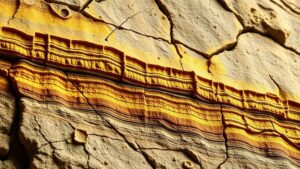How to Build a DIY Dry Washer for Gold in Desert Areas
How to Build a DIY Dry Washer for Gold in Desert Areas
Gold prospecting in arid landscapes can be an incredibly rewarding endeavor, yet many prospectors face the challenge of extracting gold from dry soils. A dry washer is a device specifically designed to separate gold from soil without the use of water, making it essential for desert environments. This article will guide you step-by-step through the process of building a DIY dry washer, ensuring that you are well-equipped for your prospecting adventures.
Understanding the Basics of a Dry Washer
A dry washer operates on the principles of air and vibration to separate lighter materials from heavier ones, such as gold. device consists of a set of riffles or a recovery box that captures gold while allowing unwanted materials to be blown away by air currents. Statistics show that using a dry washer can increase your gold recovery rates, especially in dry conditions where traditional methods fail.
Necessary Materials and Tools
To build a dry washer, you will require various materials and tools. The following are essential:
- Wood: Use plywood for the body and riffles.
- Screen mesh: A mesh screen to allow finer materials to pass through.
- Vibrator: An electric or manual device to create vibration.
- Airflow source: A fan or bellows to create airflow.
- Glue and screws: For assembling parts.
- Hand tools: Saw, drill, measuring tape, and screwdriver.
Step-by-Step Construction Guide
Building a dry washer can be broken down into several phases. Following this guide will ensure a functional and effective device.
Step 1: Construct the Base
Start by cutting a rectangular piece of plywood for the base. The dimensions can vary, but a common size is around 36 x 18. This will provide ample space for the recovery process.
Step 2: Build the Recovery Box
Next, cut two side panels and connect them to the base using screws. recovery box should taper downward to allow the captured gold to collect at the bottom. Approximately 12 inches high should suffice.
Step 3: Create Riffles
Riffles are vital to your dry washers function. Cut strips of wood or use metal pieces, placing them inside the recovery box at equal intervals. height and width of the riffles can vary, but typically they are ¾ inch high and spaced several inches apart.
Step 4: Attaching the Screen Mesh
Cover the top of the recovery box with screen mesh, ensuring it is taut. This will allow finer material to fall through while retaining larger nuggets of gold.
Step 5: Add Vibration Mechanism
Integrate a vibration mechanism to enhance material movement. If youre using an electric motor, ensure it is securely mounted and connected to the recovery boxs bottom. Manual versions can use a hand-cranked system.
Step 6: Set Up Airflow
Position a fan or bellows behind the recovery box. This will blow air into the box, assisting in the separation of lighter materials while retaining gold.
Real-World Applications and Usage
Once your dry washer is built, understanding how to operate it effectively is crucial. For example, select a location where gold is known to be present, typically riverbeds or areas downstream from gold-rich mountains. Place your dry washer at a slight angle to enhance airflow and material movement.
Next, feed soil into the top of the recovery box, ensuring a consistent flow without overwhelming the system. Check the riffles frequently to collect retained gold and evaluate your overall efficiency.
Challenges and Solutions
While dry washing can be highly effective, it is not without challenges. Common concerns include:
- Dust: Operating a dry washer generates considerable dust; using a dust mask can help mitigate health risks.
- Efficiency: Ensure the right balance of airflow and vibration; otherwise, you may lose fine gold.
- Construction quality: Use sturdy materials to withstand rugged conditions; wear and tear should be minimized to ensure longevity.
Conclusion and Actionable Takeaways
Building a DIY dry washer is a cost-effective strategy for gold prospecting in desert areas. By following the outlined steps, you can create a functional device that enhances your gold recovery efforts. Prioritize the quality of materials and address potential concerns about usage to maximize your success. Conduct regular tests to optimize performance and make any necessary adjustments based on your findings. Ultimately, a well-constructed dry washer can serve as a reliable tool in your pursuit of gold.

